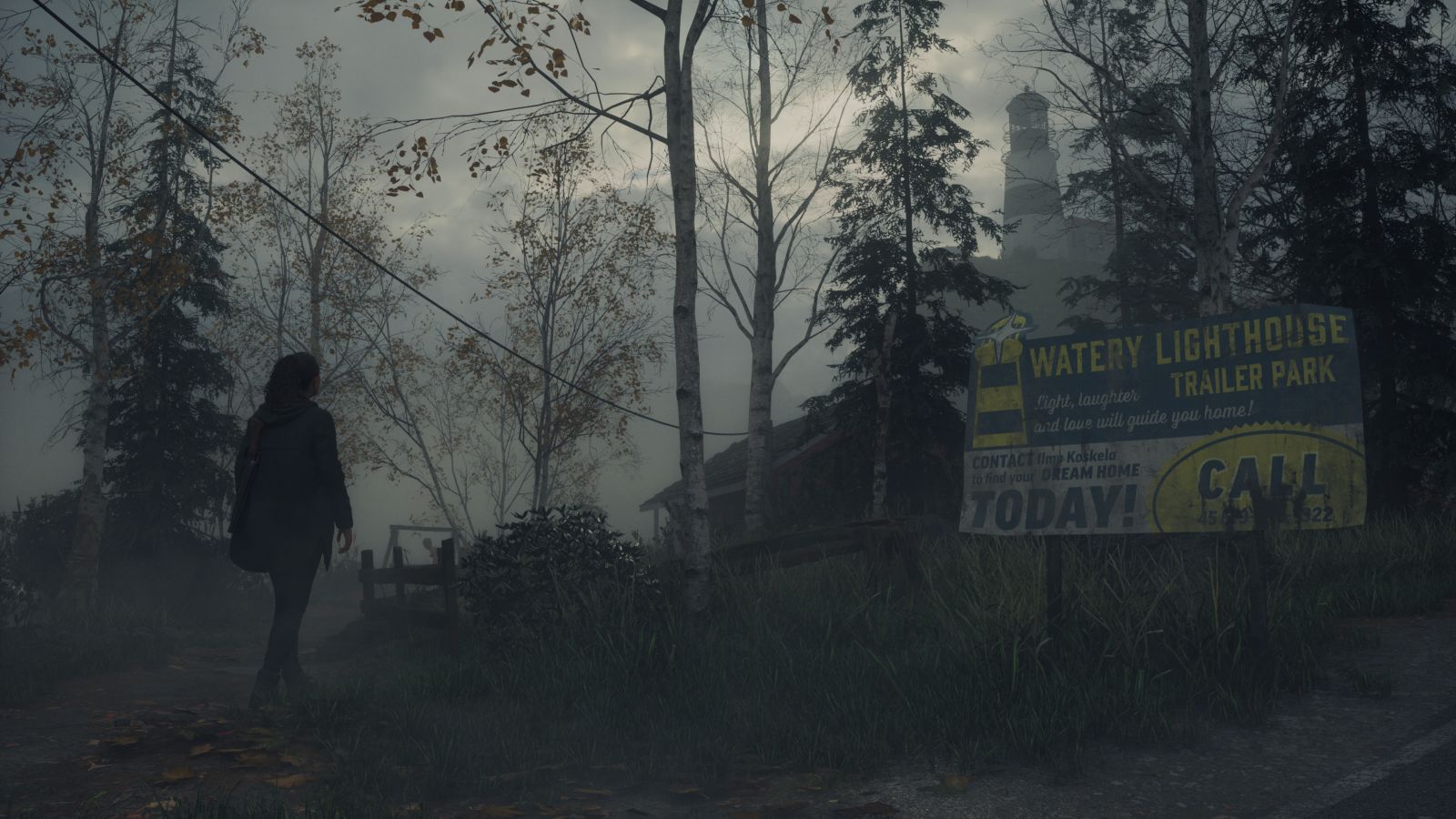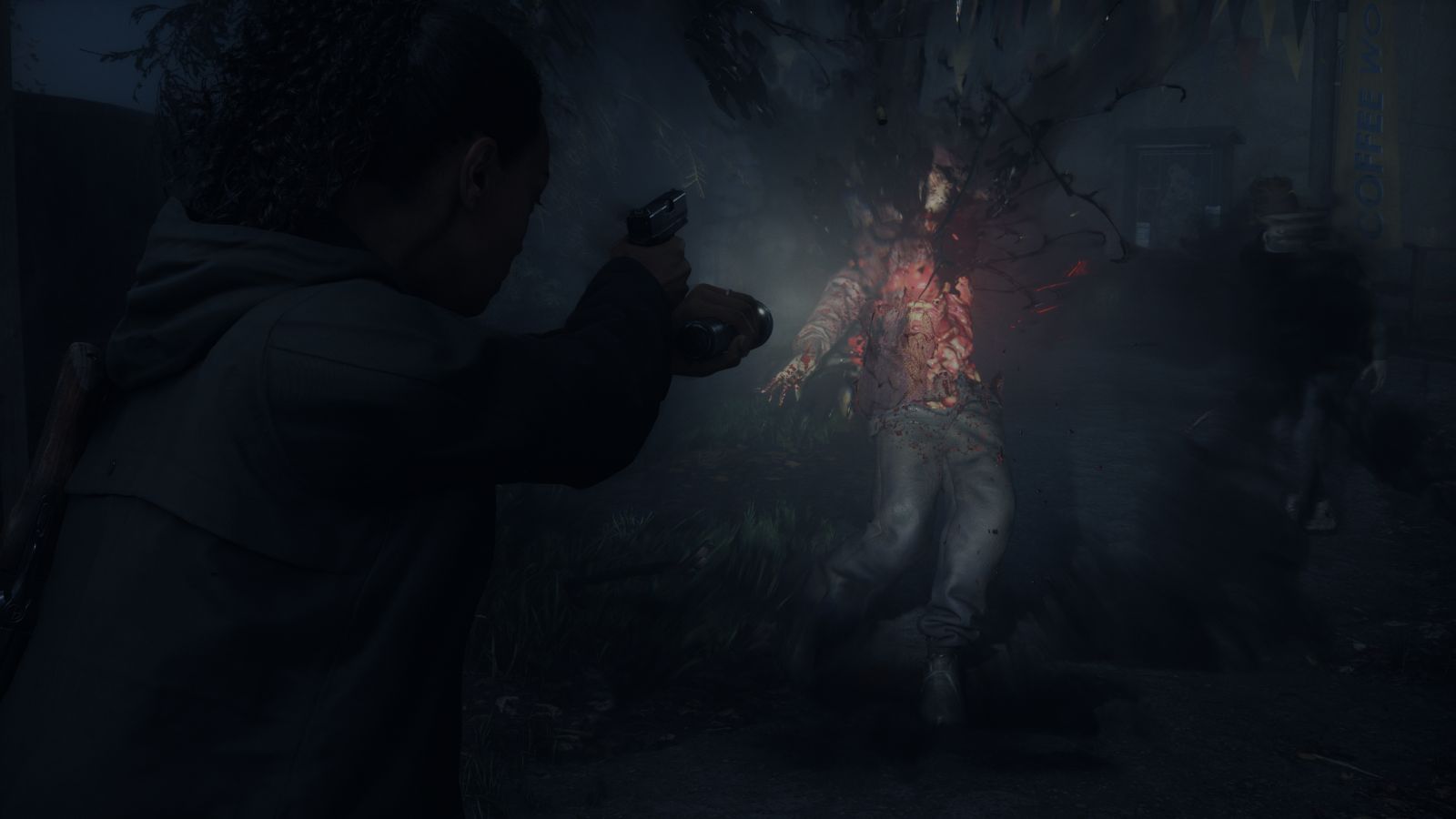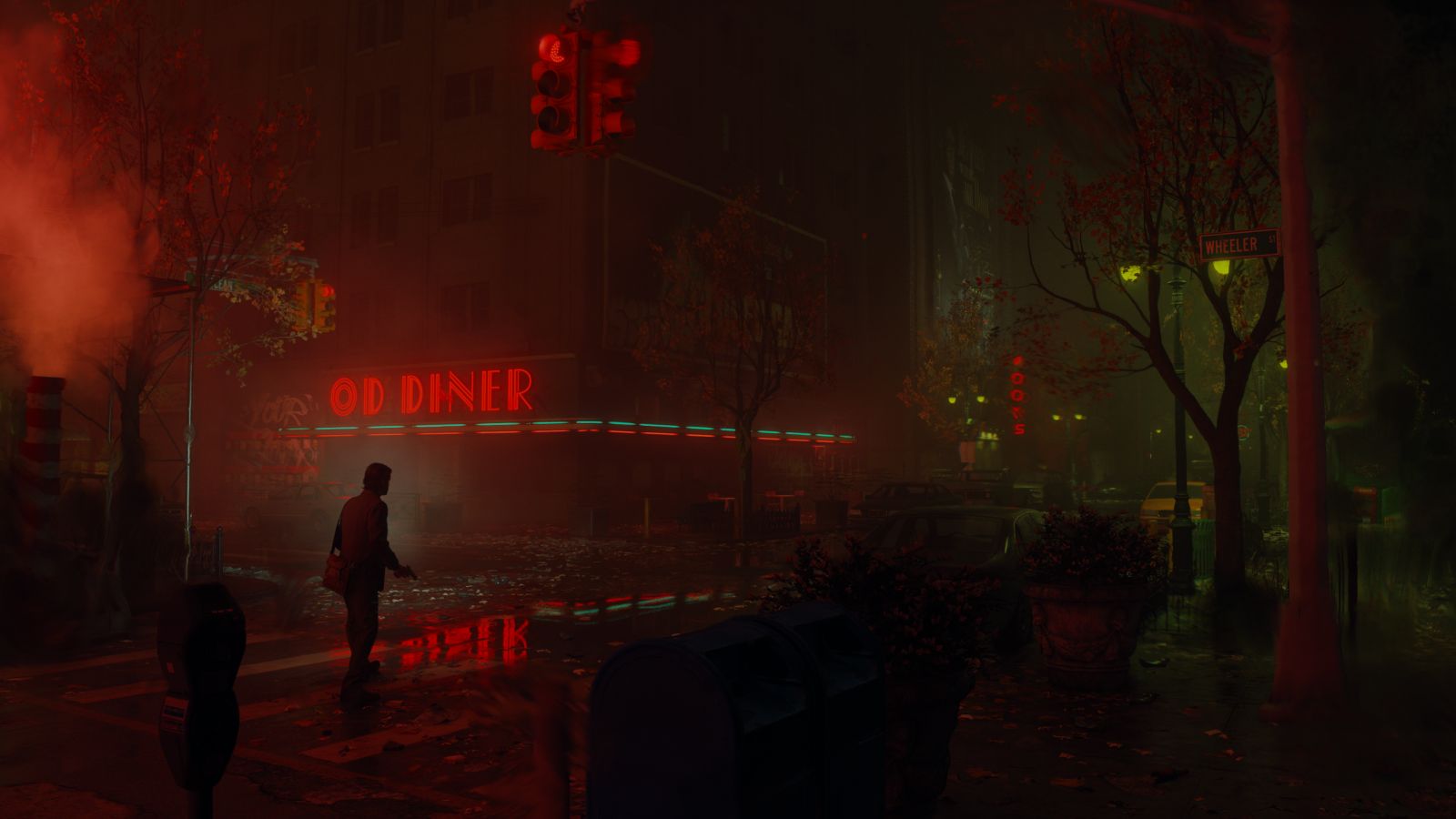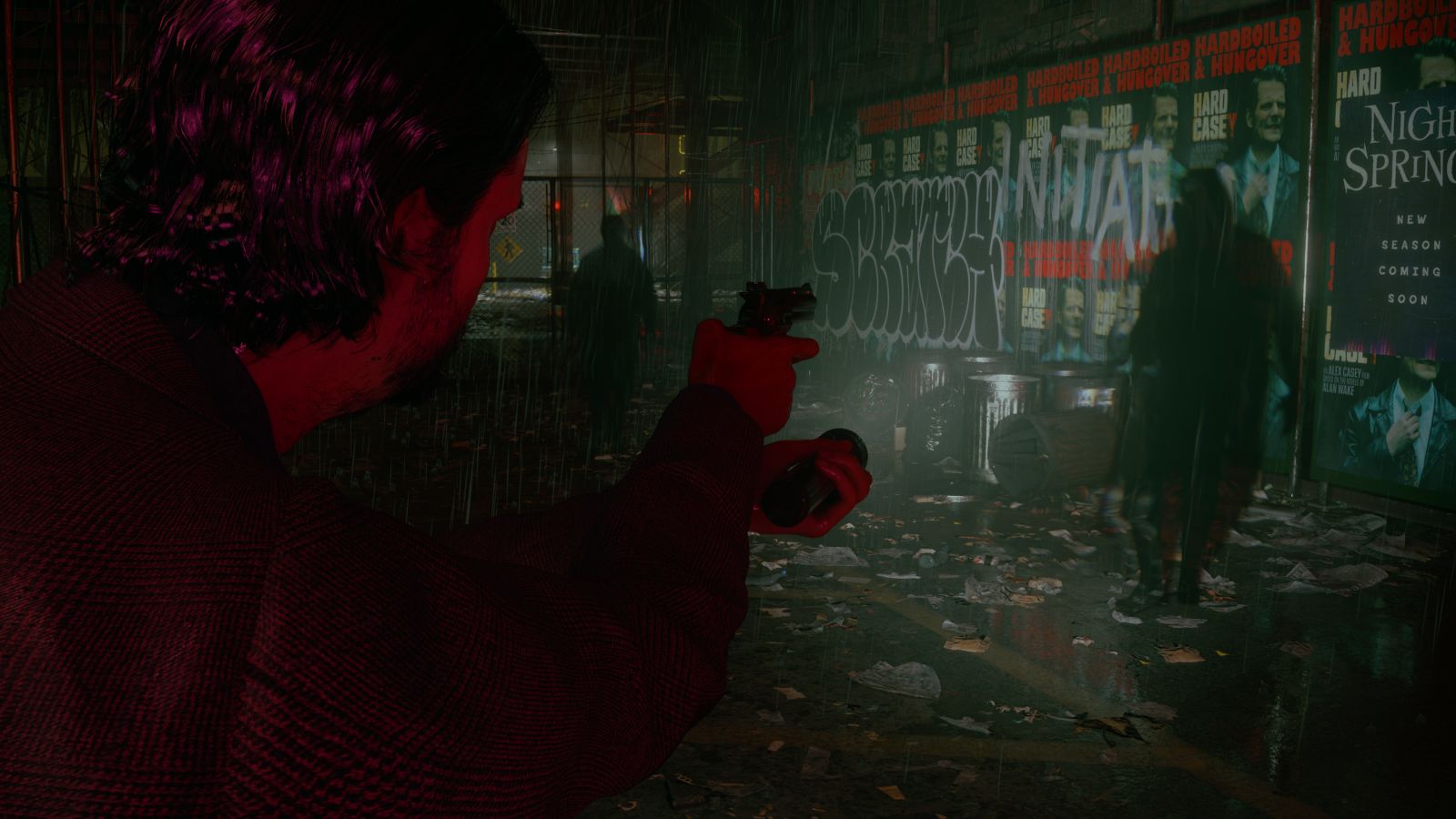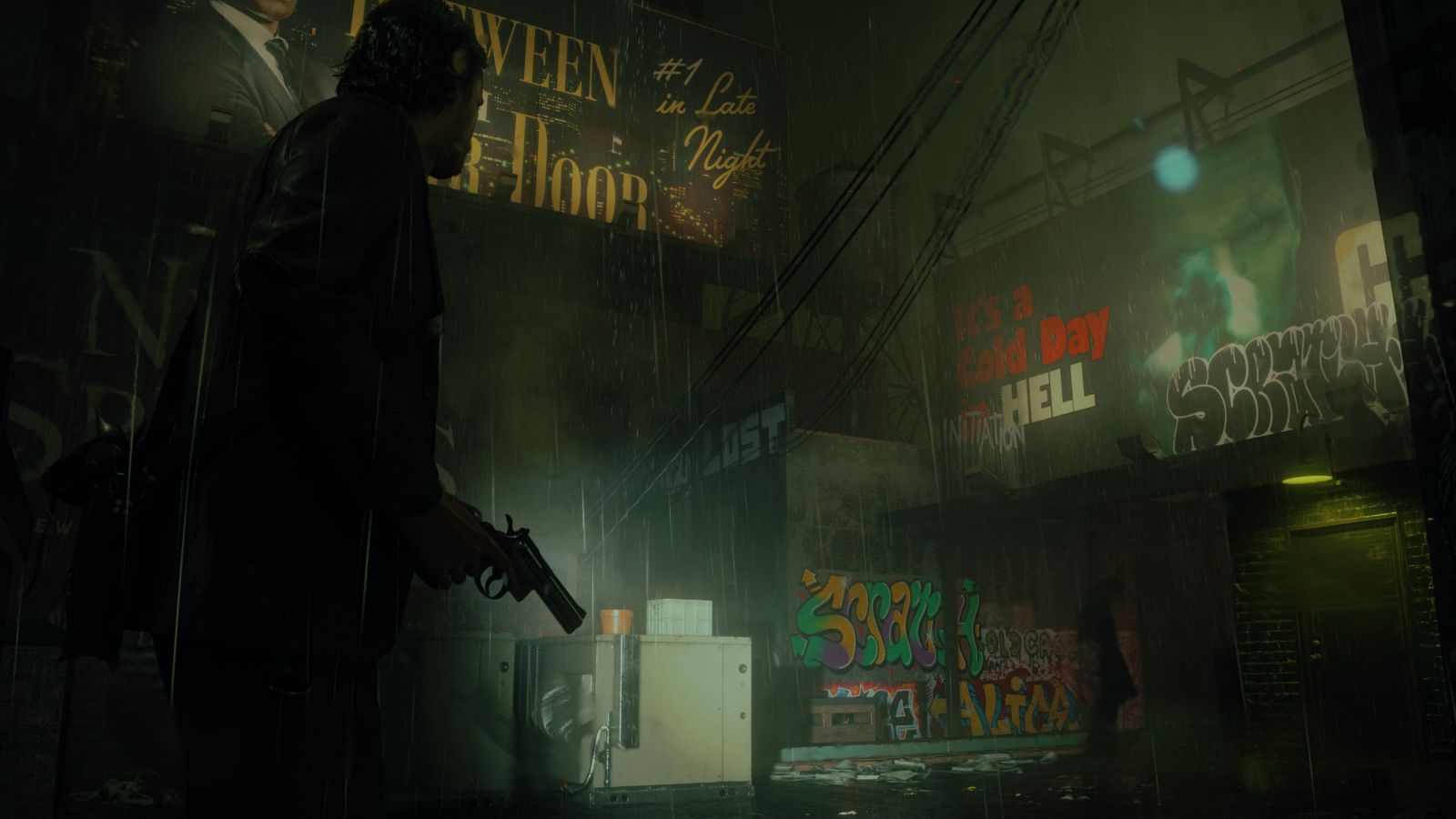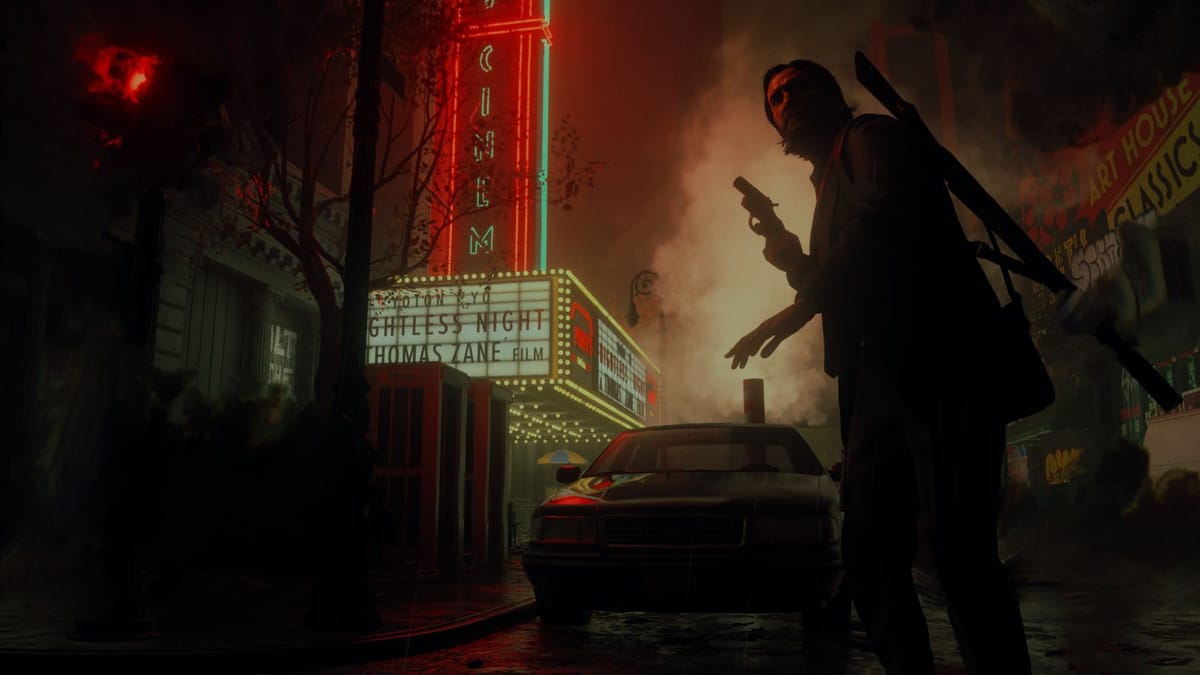
When we got to see Alan Wake 2 in action back at Summer Game Fest, you could definitely call it a dream come true. Here was one of my favorite video games, back from the dead. Seeing is one thing however, even if it’s supposed to also correspond with believing. Now that I’ve actually played Alan Wake 2, for three hours at a special preview event, I don’t just believe this is going to be one of the best video games this year, I KNOW it.
The first section I played involved the new character Saga Anderson, an FBI agent played by the amazing Melanie Liburd. You’re exploring the town of Watery in the Bright Falls area, looking for clues as to what the heck is going on. Before I go much further, I must stress that what we played left me a bit confused, though only because I was experiencing it out of order. Some of the plot lines involved are a bit much to handle without additional context, but you can easily see the incredible threads that are forming off of them.
Saga’s journey reminds me a whole lot of playing the original Alan Wake. The foggy district this level exists in mimics Bright Falls and the mountainous forests you remember. Walking around talking to the citizens gave me the impression that I was the intruder, and this is a feeling that sticks with you as you’re playing, even though you’re trying to find out more about a mysterious cult killing people. It’s that Twin Peaks weirdness that feels unique here, and draws you into the mystery behind it. Also, we’ve all seen it, but Ahti from Control is singing on a stage in one of the buildings. It will be interesting to see how these two franchises continue to intersect.
Speaking with two bikers on the outside of the town, Saga is under the impression that they know her. There’s something going on with the new pages Alan is writing, something converging beneath the surface of this reality and The Dark Place. After a bit of conversation, you’re able to choose key points of dialogue that will lead you forward to your next goal. To do some of this, you’ll have to make a trip to the Mind Place, the interactive menu space Remedy has created. It’s an amazing achievement, a room running over the top of your game (so don’t go pausing in the middle of combat, it’ll come back to bite you).
Once you’re in there, you’ll have to profile characters to reach the next piece of dialogue. Occasionally this can come across as busy work, given the profiling is more or less clicking the picture of the subject and the recent note of your discoveries in their story, but I don’t mind it considering there are plenty of other puzzles that will require your deductive skills. Besides this, you’ll also connect threads on a case board, slowly bringing the bigger picture into focus as you answer the pertinent questions behind your newest characters and clues.
I like the fact that throughout putting these things together, Alan Wake 2 doesn’t hold your hand. Sure, two and two go together often on the case board, but getting those two and two in hand to add together doesn’t just materialize. Talking with NPCs is one solution, but finding clues everywhere you go, whether interacting with things in the environment or naturally occurring through location-based discoveries, gets you into place.
For instance, one side thing was a cooler that had a crossbow in it (which I found out only after opening it). I didn’t have a combination, but noticed a specific amount of crossbow bolts dotting several targets. After counting them and entering the number, the lock opened and I was one crossbow richer. Subtle hints are awesome, they allow you to feel smart for solving a riddle without making you feel dumb for missing the forest for the trees.
Continuing into the next narrative slice brought me to Coffee World, a mini-theme park with some county fair vibes. During the journey was also my first foray into combat, and again, it’s reminiscent of the original Alan Wake. Although, Saga certainly feels like she can handle herself a bit better than poor Alan.
Right away I felt the stress of the situation before me. The objective is simple: burn away the darkness protecting your foe with your flashlight, and dispatch them with whatever weapon you have equipped. That said, gone is the recharging flashlight, replaced with a limited number of high-powered flashes based on the number of batteries you have. This turns things up a notch, mainly in having to pay more attention and be precise in using the items you have, like amount of ammo and health items. Alan Wake dabbled in the survival aspect of survival horror, and the sequel seems to dive into it even more. I’m reminded somewhat of Resident Evil in design, if only a little bit.
While this is more indicative of the overall sound and art design than combat itself, the atmosphere created, especially during intense confrontations, is immaculate. The low light conditions coupled with dreary ambience leave you on edge, unable to see more than ten feet ahead. This puts you in a defensive stance at all times, not knowing what might be around each corner. The sounds, both in the gentle wail of the soundtrack lingering in the background and the very obvious muttering of an enemy or crackling of forest noise leave you unsettled, and that’s most likely going to be there most of the time. It’s S-tier design, one of the reasons you’ll pick Alan Wake 2 when deciding what to play next.
I say a lot about this particular area of design because I don’t know that I’ve enjoyed the crack of weapon fire nearly as much as I have in Alan Wake 2. The pistol is absolutely visceral, and the shotgun blast rings through your immediate vicinity, deafening you for a slight moment. You feel the impact of each bullet. It’s a violence that’s hard to describe, because it’s an experience rather than just a feature. You also see it demonstrated on your opponents, with wounds and blood spatter where you’ve hit them. Of course, they don’t go down easily, so hitting your shots is important with a limited amount of ammo available, along with using your dodge to keep out of harm’s way.
Before I knew it, our time with Saga was up. What’s amazing is that I really felt like there was plenty left for me to bring to the light (patting myself on the back for that pun). I hadn’t finished searching every nook and cranny, and I certainly hadn’t discovered how to complete the level, even if I was getting there. That means there is a lot of meat on the bones of Saga’s side of Alan Wake 2, and I look forward to uncovering even more in the full release.
Then, the writer appeared. I almost wanted to cry seeing Alan on screen again, it’s just been too long. As you’ve seen from different videos, the vibe of neon-soaked, faux New York is spectacular; I sat there for a moment in awe, drinking in the visual feast in front of me. The gray fog is traded for dark night, and one that fills you with dread. The Dark Place is unnatural, drawing on your fear and causing you to look over each shoulder everywhere you go. There’s a clear difference between here and the real world, with the trepidation having even more of a bite.
Alan is heading to the Oceanview Hotel (a nod to the Oceanview MOTEL from Control), to discover the mysteries lurking ahead. You’re trying to escape The Dark Place of course, so whatever route that takes is fine with you. Just as before, during key moments you’ll hear Alan narrating you into the next section, which is a great way to hint at where I need to go next. Unlike Watery, The Dark Place in this level is a little bit more fixed in terms of where I was going, so I’m interested in whether it will open up as you continue down Alan’s path.
The other difference between my trip with Saga in Watery and Alan’s time in The Dark Place is the control Alan has here. He’s still trapped, but he has the ability to bend things with his writings, and also with a new tool. The Angel Lamp allows you to shift perspective, grabbing specific light from areas and store them until needed. This also changes the level around you, opening new pathways to move forward. It’s important to pay attention here- I missed a newly unblocked avenue and didn’t realize it until one of the dev team mentioned it.
Remedy dove even further into this concept once I made it into the hotel. Just like with Saga, because I started Alan’s journey further down the line, the story didn’t make as much sense as I’d have liked. That said, it’s as over the top as you can get, and I’m loving it. The paranormal weirdness that lies around every corner leaves your mouth agape, with both realization and horror accompanying them. A murder had occurred in the Oceanview Hotel, and only by Alan utilizing his writing abilities will you be able to see things from a new viewpoint.
What happens next is pure brilliance along with technical wizardry. Like Saga, Alan has a Mind Place, and instead of profiling and using a case board, you will be observing a plot in front of you. Alan is a writer, so his techniques are different. For example, I made it to the Ballroom, one of the scenes that has been constructed by The Dark Place. At the moment, the scene’s plot element is set to being a “Pre-Show Ritual”, so nothing is happening at all here at the moment.
Swapping this plot element with a new card called “Haunted” suddenly changes everything, with the stage now unblocked, chairs strewn around the room, and a new Echo (an in-game scene you trigger) available. I’m amazed at the technical marvel in front of me, because it’s like multiple instances of the game running over the top of another. After the scene played out, I was pushed into a fight with dark shadows, with some burned away completely by my flashlight, and others needing a few bullets. It was a tough encounter too, I somewhat cheesed it by running over to the safe room (called a Safe Haven) and ducked out to fire a few bullets from time to time.
After all of the shadows were gone, I could change the plot to “The Devil”, and immediately I was surrounded by dead bodies and blood splatter, with some blood used to write on the walls. Where Saga’s trip in Watery is certainly creepy, Alan’s is much more harrowing. I remember the moments of intensity from the original Alan Wake, and they are heavier here. The jump from psychological thriller to survival horror is intelligent though, not just hitting you with jump scares but grabbing at what might terrify. The final plot change is bombastic as well, a perfect end to a perfect act.
Honestly, I could continue babbling about my three hours in Alan Wake 2. It deserves it. But, I have to leave something for the review. There is so much I cannot wait to unpack, like, will reality survive, will Alan escape, will we find any closure? This preview has to end, so I’ll end with this statement- There is nothing this year you’ll play like Alan Wake 2, and when you do, it’ll be cover to cover.
Alan Wake 2 returns on October 27th. You can pre-order it now on PlayStation 5, Xbox Series S|X, and PC via the Epic Games Store.

